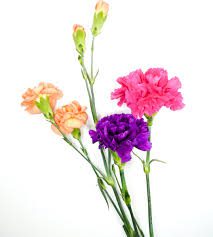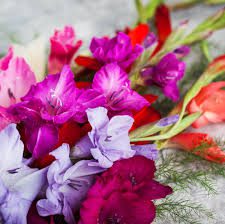Birth flowers are a captivating aspect of birthdays, celebrating the very essence of our existence. They add a touch of enchantment to these joyous occasions, symbolizing the unique qualities and characteristics of individuals born during each month of the year.
Birthdays are special occasions that celebrate the very essence of our existence. They mark the beginning of another year of growth, memories, and experiences. While we often associate birthdays with cakes, candles, and presents, there is another element that adds a touch of enchantment to these joyous occasions: birth month flowers.
Each month of the year is associated with a specific flower, carefully chosen to reflect the unique qualities and characteristics of individuals born during that time. These birth flowers serve as nature’s precious gifts, beautifully symbolizing the traits and sentiments that accompany each person’s journey through life.
The tradition of birth month flowers dates back centuries, encompassing various cultures and civilizations. Ancient Greeks and Romans believed that specific flowers were linked to specific deities or carried symbolic meanings. Over time, this practice evolved, intertwining folklore, mythology, and botanical beauty into a fascinating tapestry of floral symbolism.
The concept of birth month flowers gained further popularity during the Victorian era, when flowers became a language of their own. Victorians used flowers to convey emotions and messages, ascribing symbolic meanings to different blooms. This intricate language of flowers, known as floriography, added an extra layer of sentiment to the already meaningful act of giving and receiving flowers.
Birth month flowers are not merely decorative tokens; they hold profound significance and represent the essence of an individual’s birth month. They encapsulate the spirit, characteristics, and virtues associated with that time of the year. Whether vibrant and energetic or delicate and understated, each birth flower possesses a unique beauty that mirrors the qualities of those born in that month.
From the bold and fiery hues of July’s larkspur to the tranquil elegance of December’s narcissus, birth month flowers come in a kaleidoscope of colors and forms, reflecting the diverse personalities and experiences that make each person’s journey through life truly extraordinary.
Not only do birth month flowers carry symbolism, but they also serve as reminders of the natural rhythms and cycles of the Earth. Just as seasons change and flowers bloom and wither, our lives too ebb and flow, experiencing moments of growth, transformation, and renewal. Birth month flowers embody this perpetual cycle, reminding us of the beauty and impermanence of life itself.
Whether you are selecting a bouquet for a loved one’s birthday or seeking to understand the deeper meanings behind your own birth month flower, exploring the world of birth flowers is a delightful journey of discovery. As you delve into the rich tapestry of floral symbolism, you will gain insight into the captivating language of nature and the unique qualities that make each individual shine.
So, the next time you celebrate a birthday, take a moment to admire the beauty and significance of birth month flowers. Let them serve as a reminder of the immense diversity, resilience, and interconnectedness that exist in the natural world and within each of us. Embrace the enchantment they bring, and allow them to tell the story of your birth month, blooming brightly with every passing year.
Read Also: Grading, Storage and Marketing of Dry Cocoa Beans
Historical and Cultural Significance of Birth Flowers

1. Ancient Civilizations: In ancient cultures such as Egypt, Greece, and Rome, flowers were associated with various deities and had symbolic meanings. Birth flowers were often linked to a person’s zodiac sign or month of birth.
2. Victorian Era: During the Victorian era, the language of flowers became popular, and specific flowers were assigned meanings. Birth flowers were seen as representations of personality traits and were often used to convey messages and sentiments.
3. Birth Flower Jewelry: Birth flower jewelry has been crafted and worn for centuries, especially during the Victorian era. These intricate pieces incorporated birth flowers and gemstones corresponding to a person’s birth month.
4. Traditional Birth Flower Celebrations: In different cultures, birth flowers are celebrated and associated with specific rituals or festivities. For example, in Mexico, the marigold (October birth flower) is used during the Day of the Dead celebrations to honor deceased loved ones.
5. Cultural Symbolism: Birth flowers can hold specific cultural symbolism. For instance, the lotus flower (not a traditional birth flower) has deep cultural significance in Asian cultures, representing purity, enlightenment, and rebirth.
6. Regional Traditions: Different regions have their own unique birth flower traditions. For instance, in Celtic traditions, trees rather than flowers are associated with birth months, with each tree having its own symbolism.
7. Folklore and Legends: Some birth flowers have folklore and legends associated with them. For example, the daffodil (March birth flower) is believed to bring good fortune and prosperity, as well as ward off evil spirits.
8. Artistic Representations: Birth flowers have been depicted in various art forms throughout history, including paintings, tapestries, and sculptures. These representations often reflect the cultural and historical significance attributed to the flowers.
Understanding the historical and cultural significance of birth flowers provides a deeper appreciation for the traditions, beliefs, and artistic expressions associated with these floral symbols in different societies and time periods.
Read Also: Products That Can Be Made From Cocoa
Uses of Birth Flowers

Birth flowers can be used in various ways to celebrate birthdays, convey meaningful messages, and enhance the aesthetic appeal of gifts and decorations.
Here are some common uses of birth flowers:
1. Birthday Celebrations: Incorporating birth flowers into birthday celebrations adds a personal touch. They can be used as centerpieces, decorations on cakes, or as part of a birthday bouquet or floral arrangement.
2. Personalized Gifts: Birth flowers can inspire unique and personalized gift ideas. They can be incorporated into jewelry, such as necklaces, bracelets, or rings, featuring the birth flower charm or gemstone associated with the birth month.
3. Floral Arrangements: Birth flowers can be used to create stunning floral arrangements, either as standalone bouquets or mixed with other complementary flowers. These arrangements can be given as gifts for birthdays, anniversaries, or special occasions.
4. Home Decor: Birth flowers can be used to adorn living spaces. Dried or pressed birth flowers can be framed or used in DIY crafts, such as wreaths or floral displays, to add a touch of personalization and beauty to the home.
5. Wedding Bouquets and Decorations: Incorporating birth flowers into wedding bouquets, boutonnieres, and floral decorations can add sentimental value and significance to the celebration. Birth flowers can be chosen based on the birth month of the bride, groom, or other important individuals in the wedding party.
6. Symbolic Messages: Birth flowers can be used to convey symbolic messages. For example, gifting someone their birth flower can represent well wishes, love, or appreciation. Combining birth flowers with other flowers can create a bouquet with specific meanings and sentiments.
7. Commemorative Purposes: Birth flowers can be used to commemorate the birth of a child or to remember and honor loved ones on significant dates. They can be arranged in vases or used as floral tributes during memorial services or remembrance ceremonies.
8. Floral Art and Crafts: Birth flowers can be used in various artistic endeavors, such as painting, drawing, or creating floral arrangements. They can inspire creative expression and serve as subjects for artistic exploration.
These uses of birth flowers allow individuals to incorporate the symbolism and beauty of these flowers into their lives, celebrations, and expressions of love and appreciation.
Read Also: Strategies for Reducing Water Pollution
